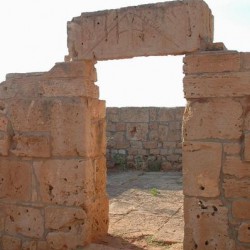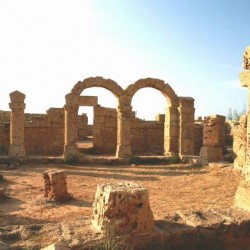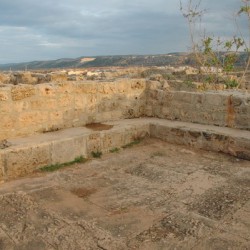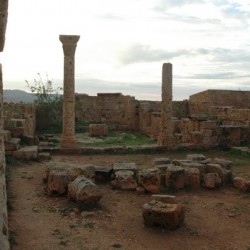Apollonia, palace

Apollonia was made capital of a newly created province, Libya Superior, by the emperor Diocletian (r.284-305). It was renamed Sosouza ("savioress"), probably after a goddess who was venerated here (Isis?). The military leader of the region, the dux, built his palace in the city, and rebuilt the original wall from the third century BCE, which was next to it.
The first photo in the gallery below shows one of the gates that gave access to the central court. As you can see, a cross was cut into the stone over this door: a memory of the Christianization of the Roman empire during the reign of Constantine the Great (r.306-337) and his son Constantius II (r.337-361).
The palace once had two storeys, but only the rooms on the ground floor - where the governor received his guests - remain. There were two large villas near this monument, which were probably used as an annex to the palace.
Apollonia became especially important in the fifth century, when the interior was abandoned to the Laguatan nomads (Synesius of Cyrene describes these disastrous years in his Catastasis). The port remained one of the last bases of the Byzantine troops and the palace of the dux must have been one of the most important military buildings in the Cyrenaica.
According to Procopius, the Byzantine empress Theodora spent several years in the palace of Apollonia, as mistress of a governor named Hecebolus.note Later, she married Justinian (527-565) and became one of the most powerful women from Antiquity.
 Apollonia, Palace, Gate |
 Apollonia, Palace, Court |
 Apollonia, Palace |
 Apollonia, Palace |